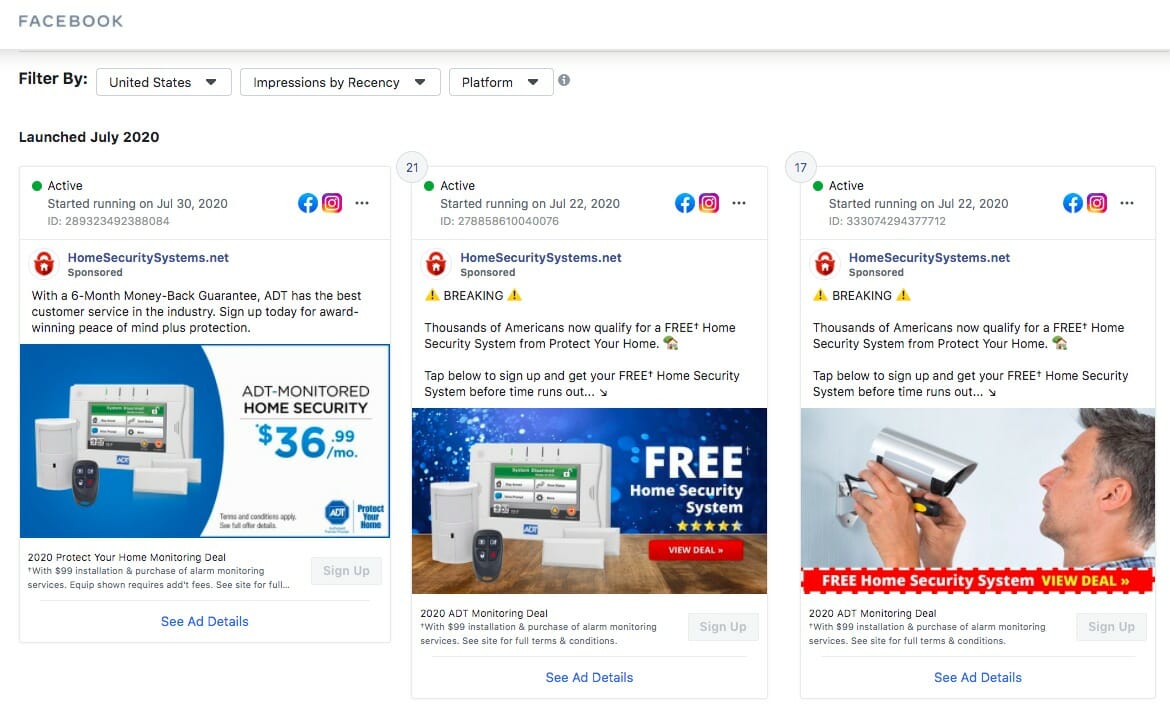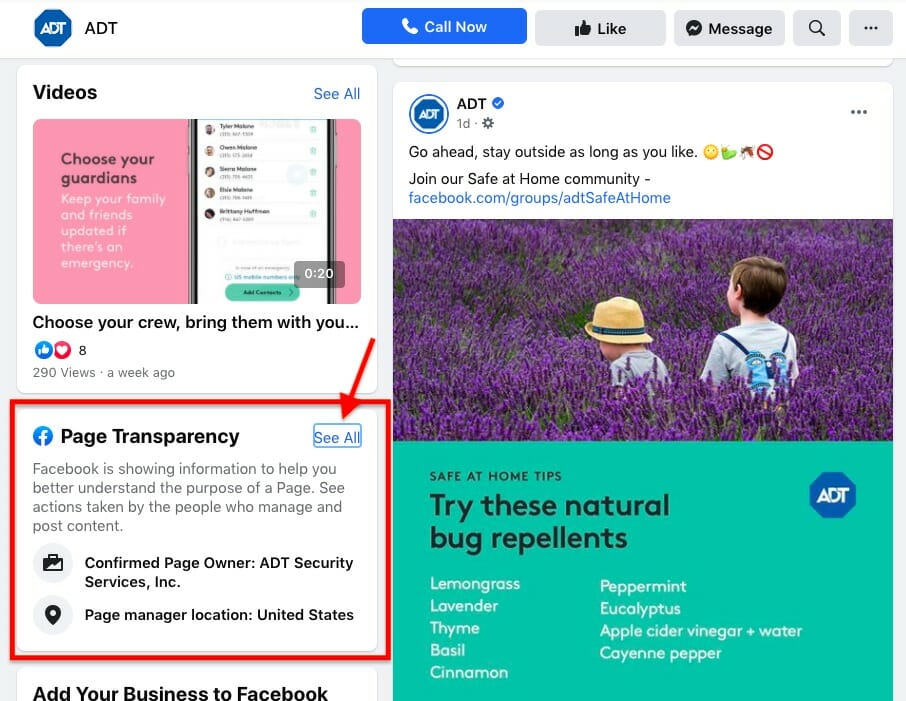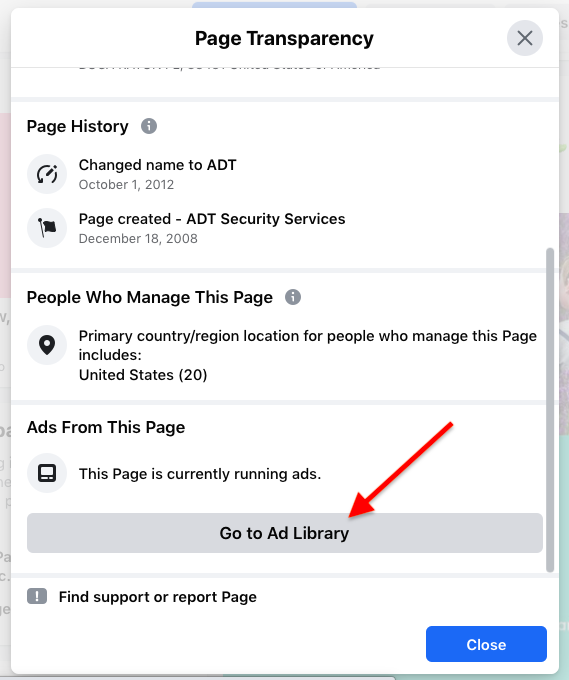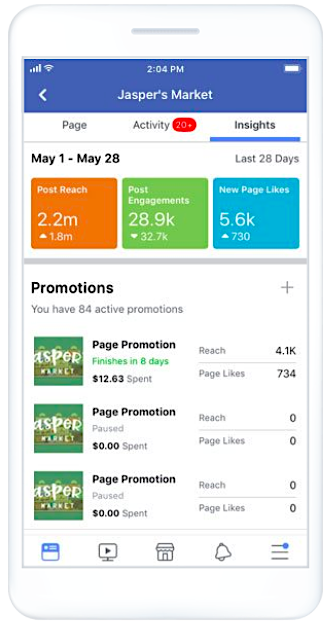Three weeks ago, my fridge started making an alarming noise ten minutes before it started to leak water down the side. I rushed straight to Lowes to look at replacements, and the sales associate told me I was lucky.
“Home Depot just had their big appliance sale,” he told me. “So we had to do ours, too. Couldn’t lose any customers because they had a sale and we didn’t!”
Competitor research has always been and will always be a core part of marketing, and this is the perfect example. You can use this type of research to get new ideas, steal the competition’s best strategies, find new ways to differentiate yourself, and (of course) make sure that they aren’t one-upping you to become the best deal in town.
With so many avenues of marketing available online and so many competitors coming from all over the globe, however, competitor marketing has gotten trickier than ever before. There’s a lot to keep up with, and you need to be smarter about how you’re utilizing the data you collect.
We’re ready to help you break that down, identifying how to find the best competitor information available in a number of key marketing channels and how to implement it into your campaigns.
TABLE OF CONTENTS:
Why Is It Important to Research Competitors?
Competitor research (or competitor analysis) is a core marketing strategy in which you scrutinize your competition to learn what marketing tactics they’re using, as well as their strengths and weaknesses, in order to improve your own marketing strategies.
Online competitor research used to be an enormous pain because it required a manual review of each competitor. Nowadays, there are an enormous number of incredible competitor research tools you can choose from, some of which can even access data you’d never be able to find manually.
When looking at competitor research that has all been compiled into one document, you will see:
- The strategies that your competition is using
- How much time they’re investing in campaigns on different platforms, indicating their marketing priorities and what is most effective for them
- The value propositions, customer pain points, and product features they’re highlighting to try to drive traffic
- The specific offers and promotions they’re running
- Their brand voice and overall approach (are they edgy or funny or relatable?)
- The results they’re getting (you can see how much someone is bidding on a PPC campaign or their engagement rate on social media in the blink of an eye)
This is an enormous amount of information from the competition that you can use to shape and improve your own campaigns, such as seeing a consumer need that is not being addressed by your rivals (which you will then address, of course).
Competitor research is most effective when broken down into distinct categories because it allows you to focus on each marketing channel individually.
Let’s take a look at each. But first….
Identifying Your Fiercest Competitors
You’re almost certainly familiar with a few competitors that are pretty much on the same page as you. They might be geographically close or successfully marketing to part of your target audience. If you have a local dentist office, it’s important to ensure that the practice located two blocks away isn’t offering a better welcome promotion than you.
Sometimes, though, a few of your competitors manage to escape your notice. Even if they aren’t direct competition for immediate customers (a dentist office in Denver versus yours in Manhattan), they can still be considered industry competitors who can give you insight on smart strategies, or they might be hitting the top spots for the long-tail keywords you want to target.
You likely already have a list of some of the competitors you want to keep an eye on. That’s a great start, but it’s important to make sure your list is fully fleshed out before you dive in to individual research sectors.
I recommend using BuzzSumo to find competitors that you may not know about in your industry:

This platform has features that let you search for content for any given keyword, and see some of the top-performing content by engagement, number of backlinks and evergreen score. You can also apply filters to the types of content available.
You can also use a keyword research tool like SEMrush to identify your top competitors for specific keywords:

If you search for generic, industry-oriented keywords, you’ll have a good shot at finding the businesses who offer similar services or content that your audience is looking for.
Although there’s a good chance that you may identify more businesses to keep an eye on while conducting your research, it’s important to start off with a strong list.
Dive Deeper:
* How Often Should You Be Monitoring Your Competition?
* 10 Tools to Monitor Your Competitors’ Growth and Hack Their Strategies
* Why Competitive Analysis Is the Key to Early Success
Organic Keyword Research
Conducting competitor research on organic keywords can show you the specific terms that your competition is targeting and how successful their campaigns are in the SERPs.
Tools that Can Help
When it comes to spying on organic keywords, look for a tool that will allow you to both review specific keywords and search for competitors to see the keywords they’re targeting. Ideally, the right tool will also show you additional information, like the brand’s positioning for particular search phrases.
These tools are great options:
- SEMrush (which we’ll be using in this post)
- SpyFu
- Moz’s Keyword Explorer

Identify Your Competitor’s Organic Keywords
Analyze your competitors’ sites, one at a time, to determine which keywords they’re targeting. Each of the tools in the section above will let you search for specific domains and give you a list of all the keywords they’re ranking for.
Take note of the keywords that they’re using, their positioning for that keyword, the total potential volume and what percentage of traffic they’re getting from each one:

In this post, we’ll do research for a hypothetical home security system company (which we’ll call HSSC), so it will make sense to start with mega competitor ADT Security Services.
It’s immediately clear that they’re ranking well for branded keywords, which has such enormous search volume thanks to their reputation:

Let’s dig deeper to get beyond the branded keywords. In the screenshot above, you’ll find more generic, long-tail keywords that HSSC can use to attract customers in earlier stages of the marketing funnel.
Examples include “house alarm system,” “outdoor surveillance cameras” and “chicago crime crate,” all of which can be used to create content for different stages of the sales funnel.
Now you can create another list of the keywords here that you think you have a chance of ranking for (and can create content around).
How to Use this Information
There are several ways to use the organic keyword data you’ve uncovered for your competitors. These include:
- Spotting trends in keywords that can indicate marketing strategies. ADT, for example, is clearly relying on a combination of branded keywords to capitalize on their reputation and long-tail keywords for content marketing to reach users in earlier stages of the funnel. As a smaller business, you may realize that the former isn’t an option for your home security system just yet, but that you can target long-tail keywords (for example, writing a blog post about crime rates in certain cities).
- Identify specific keywords you want to use. You might get a few great ideas for keywords you want to use in your own campaigns, or general topics you’d like to do more research on. If you worry about not having enough domain authority to outrank your competitors, then you can always write these keywords down for a potential PPC campaign.
- Identify keywords you don’t want to use. HSSC, our not-yet-established business, would have a hard time outranking ADT with a blog targeting the keyword “home security system,” especially when you click on it and see seven other big names taking up the top slots. This may require you to revise your strategy and focus on more specific long-tail keywords so that you have a chance to rank in the SERPs.
Dive Deeper:
* Beginner’s Guide to Discovering the Competition’s SEO Strategy
* 9 Tools for Easy Competitive Website Analysis
* 3 Things We’ve Learned from Ranking for Competitive Keywords With Viral Traffic
PPC Research
Pay-per-click campaigns can include search ad platforms like Google Ads and Bing Ads, along with social discovery ads like Facebook Ads, Twitter Ads and Promoted Pins (Pinterest’s paid ads).
Tools that Can Help
Big components of PPC research will involve finding out as much about your competitors’ strategy and messaging as possible, in addition to digging up PPC keywords and bids for search ads.
For search ads, the same tools we used for organic keyword research will apply here:
When it comes to social PPC campaigns, on the other hand, the following free tools are particularly useful:
- AdEspresso’s Ad Gallery (which allows you to search for a brand or keyword to see all ads recorded and not just the ones currently running)
- Facebook’s Info & Ads Tool
- Facebook’s Ad Library
- Twitter’s ad transparency tools
Identify Who Is Ranking for Your Target Keywords
If you’re getting ready to run search ads, you’ve likely already done at least preliminary keyword research to look for terms that you think your audience might be searching for. Type those keywords into a tool like SEMrush to see what your competition is for those specific keywords:

When you view each individual keyword, you’ll be able to see which companies are currently running ads targeting that keyword effectively and view their ad copy.
This is important – you can get an idea of what you’re up against in terms of strategy and copy so you can ensure that your offer will stand out and be competitive. If you’re offering $20 off but ADT has that $50 promotion going, you’ll probably lose the clicks and the customers.
Facebook’s Ad Library works the same way, too:

Review Your Competitor’s PPC Keywords
The next step is to search for your individual competitors and get a detailed list of the keywords they’re targeting for their PPC campaigns.
This can help you find high-value keywords that you either haven’t thought of or brushed off, and can even show you what your competitors are paying for each keyword:

The CPC insights are exceptionally valuable because if you see that ADT has the #1 ad position for “outdoor home security cameras” and you’re willing to pay more than $5.89 per click, you can go in with a higher bid and targeted copy in attempt to snag that top spot.
By creating relevant ad campaigns and combining them with high bids, you can use some of your competitors’ most valuable keywords against them.
You may also discover that some of their branded keywords have high search volume but relatively limited traffic and lower CPCs. If this is the case, it presents an opportunity for you to bid on those branded keywords and hopefully give yourself a chance even if someone is searching for your competition directly.
Assess Social Strategies with Ad Transparency Tools
Our research so far has been exclusively for search ads. Social media PPC competitor research will look a little different. They don’t have keywords that you can search for, after all, but several free tools have been released in the last two years that can still help you here.
Facebook’s transparency tool is the first place I typically start. Find a specific competitor’s Page, and look for “Info and Ads.” You’ll see a list of all the ads that the Page is currently running, even if you aren’t in the campaigns’ target audience.

Here’s where to find that info on a desktop. First, go to the page of your competitor, then scroll down until you find “Page Transparency” on the left-hand side:

Click on the “See All” link and the following pop-up will appear – scroll down and click on “Go to Ad Library”:

At this stage, it’s best to review everything in detail.
This particular competitor (Ring) focuses the majority of their strategy on video ads, and switches from camera-in-use videos to clean images of the products themselves, alternating between basic facts and stories that showcase value and create an emotional response:

If you look at each ad, you’ll be able to get a feel for the brand’s different approaches and the audiences they’re targeting. The ad above, for example, was definitely created to appeal to pet owners, giving them an extra reason to buy into the suite of Ring’s home security products.
Reviewing your competitors’ ad campaigns can help you identify additional audience niches and pain points to consider.
It’s also a great idea to use a tool to review a large number of ads in your industry quickly. AdEspresso currently has the largest number of ad examples to date, and lets you search based on industry, keyword, brand name, etc.

Their pixel definitely hasn’t captured every campaign that’s been run, but it will give you a good idea of what your competitors have been up to historically and give you some more room for inspiration.
Again, look for pain points, emotional triggers and storylines that you can adapt for your own campaigns. Social media ads have the added bonus of allowing images and videos, so there’s more room for storytelling and emotional appeals; use that to your advantage.
Dive Deeper:
* 5 Great PPC Tools to Crush Your Competitors
* Beginner’s Guide to Amazon PPC Ad Campaigns
* Ecommerce Advertising Strategy: How We Doubled PPC Sales for ThinSlim Foods (with a 3X+ ROAS)
Social Media Marketing Research
Social media marketing is relatively transparent, but because it works at a pretty rapid-fire pace and there are so many profiles to keep up with, it’s difficult to track reliably without the right tools. Getting an accurate look at your competitors’ overall strategies and actions are essential to being able to use the data correctly for your own business.
Tools that Can Help
There are a large number of great social media publishing and scheduling tools that have advanced analytics. That’s useful for your own data, but when it comes to competitor research, you’ll benefit most from those that have competitor analytics and tracking, which can show you where you stand in comparison to specific businesses in terms of strategy, output and several key performance metrics.
Examples of these tools include:
- SEMrush’s Social Media Tracker
- Fanpage Karma
- Facebook’s Insights (which allows you to track several competitors)

1) Evaluate Follower Count
The first step of competitor research on social media will be to take a look at the accounts with a high number of followers and see how you measure up. A lot of analytics tools (including SEMrush, pictured here) will show you total follower count in addition to the recent growth:

Some businesses will have exceptional reputations, domain authority and overall marketing campaigns but struggle with social media. Looking for quickly growing accounts is a good sign because it indicates that they’re doing something right.
That being said, be wary of accounts with a growth rate of more than 30% per month, because there may be purchased followers involved.
2) Carefully Monitor Engagement Rate
Even more important than follower count is the account’s overall engagement rate, with “rate” being the key word here. An account with 10,000 followers and 10 likes per week isn’t as impressive as an account with 100 followers accruing the same amount of likes.

High engagement rates indicate quality content that’s relevant to their target audience, and those are accounts you want to draw some inspiration from. Look at accounts with high-engagement rates individually, and manually search for the posts with the most likes, shares and comments.
You’re likely to notice certain trends in either post style or subject. Examples include:
- Contest announcement posts
- User-generated content featuring images
- Q&A-style posts that drive engagement
- Specific niche topics in your industry
Compile a list of strategies, topics or styles of post that have a clear impact on engagement. Even if they’ll only become an occasional part of your social media rotation, like a social media contest, this can still be valuable.
3) Look for Posting Frequency
Determining the posting frequency is often a challenge that businesses face on each platform they’re on. Some brands can maintain high engagement rates while posting at least once daily, while others seem to top out engagement rates at 3x per week maximum.

Accounts with high engagement rates can be a good place to start your research, because it means they’re posting often enough to keep their audience interested.
See how many times they’re posting each week on each platform. These businesses will likely offer similar content to a similar audience, after all, making the data more relevant than general case studies from other industries.
One thing to note when considering posting frequency and looking at analytics for Facebook is that a large number of businesses are using Facebook Groups as a central part of their social marketing strategies. If this is the case, the majority of valuable content may be shared within the Group instead of the standard Page.
Look to see if your top competitors have groups; many will be private or closed, but some may be public and you can do a little extra research.
Dive Deeper:
* How to Uncover Your Competitor’s Facebook Ad Strategy
* Best Lead Generation Tactics for Content, Email & Social Media Marketing
* Social Commerce: The Easiest Way to Turn Social Engagement into First-Time Buyers
Content Marketing Research
Content marketing will most frequently take the form of an on-site company blog, though many campaigns also feature lead magnets like e-books or checklists, video series of how-to content, guest posting on other sites, or webinars.
Tools that Can Help
It can be difficult to assess the actual lead or conversion impact from your competitors’ content marketing, but you can assess the content they’re creating, the keywords they’re targeting (which we covered in the first section), the traffic they’re generating, and the strategies for which they’re optimizing their content.
There are tools that can help with this, but unfortunately this is one marketing sector that will require a little more manual review than others. Content marketing can help accomplish a number of distinct business goals, while yielding evergreen posts that can generate search traffic for an extended period of time.
Aside from keyword research tools, the best tool available to help with competitor and industry reach for content marketing is BuzzSumo.
1) Search for Top-Performing Content
BuzzSumo, as we discussed at the beginning of the post, has fantastic content analysis capabilities. You can search a single domain, a keyword or a general topic.
For competitor research, I like to start by searching for specific topics I plan on writing about and see who is writing similar content:

This will show you your top competition for each specific topic, and you can even look for specific types of content like “how to” or “why” posts.
At this stage, I look at the following:
- My specific competitors for the topic(s) I’m going to write about, which can help me determine if I need to alter my keywords, given their domain authority.
- The exact angle that they’ve written about, which can sometimes show you what information users still need and are looking for.
- How well these topics performed through social shares, giving you some insight into how well it was received by the audience.
I strongly believe that to ensure that your content marketing campaigns are successful, you need to be writing posts that are better than what’s out there or that no one else has written yet, and they all need to be created with your audience’s needs at the forefront.
On BuzzSumo, if you find an article you like, you can click on the brand name to review more content from the same creator. This is a great move if you’re wondering what direction to take your content marketing in and how much you can afford to break away from a central core topic.

You may discover, for example, that users who are interested in home security don’t just want to learn about the benefits of a security system; they want to learn about the specific risks they face, how to protect their online data, and differences in types of systems.
Taking a look at your competition can give you some ideas on how to expand past a few core keywords in a way that your audience will respond to. Just remember to make the content your own.
2) Do a Manual Review
BuzzSumo can help you look for specific posts that meet qualifications, such as those that fit a certain article type or length, but I’ve found that content marketing competitor research benefits from manual reviews.
Take what you’ve learned in the last stage and go a step deeper. Look at the blogs of your top content competitors (which may be direct sales competitors, but may not – there’s only so much room in those SERPs!).
As you’re doing so, scroll through their posts and assess the following:
- The length of their high-performing posts. In many cases, social share counters are present on high-traffic blogs and can give you a hint about a brand’s most successful content. Each industry has different standards when it comes to ideal post length, and while I typically recommend opting for at least 1,000 words for SEO and value-based purposes, some industries almost require 2,000 words to stay competitive. Others have content that’s much shorter or much longer. You’ll need to discover what works best for your brand and industry.
- The styles of the posts themselves. Are they written in a serious, professional tone, or do the top brands opt for a more casual, conversational and maybe even humorous approach? Do they use lots of bullet point lists to keep things digestible, or are they featuring case studies with original data? See what’s getting results and consider whether or not that brand voice would be right for you.
- How they incorporate other media. Do the top blogs in your industry share screenshots of their own analysis? Do they feature how-to videos within their posts, create infographics available for downloading or opt to embed social media content that backs up their point? All content should contain visual elements, but you might be able to get a few new ideas for how to step up your content by looking at your competition.
Manual reviews of your top competitors should offer specific, actionable insight into how exactly they’re creating their best converting content. In some cases, you can use what you learn to create a basic content template or new guidelines for what you want to include in your posts.
Dive Deeper:
* How to Uncover Your Competitors’ Content Strategy
* 22 Brands with the Best Content Marketing Campaigns
* How to Create a High-Performance Content Marketing Strategy in 2023
3) Look for CTAs to Indicate Strategy
Too many sites make the mistake of not optimizing each and every blog post for a specific call to action. When you’re doing your research, look for the sites that have CTAs and take note of them: They can give you clues about what your competitors’ goals are for each post they write.
CTAs in blog posts are often found at the very end of the content, once users have had time to digest what they’ve read, take in the value, and (hopefully!) take action. Different types of CTAs include:
- Engagement CTAs designed to establish on-site comments, like “What do you think? Share your comments below!”
- Social share CTAs, which focus on increasing shares for social proof and an increase in site traffic. These may be something like “Love our posts? Don’t forget to share!”
- Lead generation CTAs, which have the goal of getting users to share their contact information for a newsletter, blog subscription or lead magnet like an e-book or webinar. These can be found in the form of “Want to learn more? Register for our free webinar before spots run out!”
- Sales CTAs, which seek to increase sales of a product or service mentioned in the post, and may include “Ready to start your free trial? Click here!”
Here’s an example of a “Download Now” CTA:

Each business should create a content strategy based around their own unique goals, but knowing what your competitors are optimizing for can be useful.
You can see how they’re going about creating content to drive specific results, get a few ideas for new creative CTAs, and maybe even discover a few value offers or pain points to frame your CTAs to make them more effective, helping you improve the effectiveness of your own campaigns.
Final Thoughts on Competitor Research
Of course, all brands will benefit from having their own well-thought out, unique marketing strategies that are tailor-made for their audience. This is an important secret for success, but so is understanding what your competitors are doing. These businesses can be what stands between you and your target audience, making it essential to know what they’re doing and why, giving you the opportunity to beat it.
It’s crucial to acknowledge, however, that each of your competitors may be targeting a slightly different audience niche, and they’ll have their own unique brand voice, values and offers. It’s essential to ensure that any strategies you steal are directly relevant to your audience and your brand. It doesn’t matter if you are able to swipe some of their traffic, if they’re not the right fit for you and it doesn’t lead to conversions.
Ultimately a combination of smart competitor research combined with an original value proposition or marketing strategy is what’s needed to increase your conversions and land new customers, so make sure that you’re valuing both during the strategy development process.



